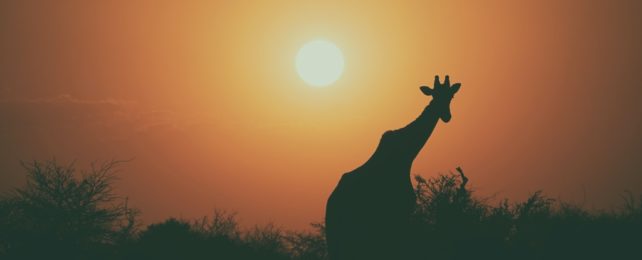No animals are immune to the effects of climate change, but some are significantly more sensitive than others.
They may live in a habitat undergoing severe upheaval, or they may just lack the adaptability to keep pace, even if their environment is comparatively stable.
But as humans struggle to rein in climate change, we also have a duty to help other animals survive the crisis we've created.
While this means striving to save hard-hit individual species, it also means considering which types of animals are most and least vulnerable to the effects of climate change.
In that spirit, a team of European researchers examined records for 157 species of terrestrial mammals, looking for links between yearly weather anomalies, population growth rates, and species-level life history.
Their findings, published in eLife, point to a potentially important pattern in the relationship between a species's life history and its response to annual weather anomalies.
"We can see a clear pattern: Animals that live a long time and have few offspring are less vulnerable when extreme weather hits than animals that live for a short time and have many offspring," says evolutionary biologist Owen Jones from the University of Southern Denmark.
Examples of the former group include elephants, tigers, llamas, and some long-lived bats, while the latter includes many small marsupials and rodents.
These new findings fit with other studies, the researchers write, noting that slower-growing, longer-living species with fewer offspring do tend to be more resilient against environmental fluctuations; such critters have evolved to withstand the different conditions they're likely to encounter over their longer life spans.
The creatures with 'slower' life histories often fare better during disasters like prolonged drought, for example, compared with shorter-living species.
They can focus their energy on a smaller progeny, or sometimes just wait out lean times, the researchers note, unlike animals whose briefer lives offer less flexibility in the face of adversity. Indeed, these species often experience booms and busts, with populations sometimes surging or crashing depending on conditions.
As ecologist John Jackson points out, simply being more susceptible to extreme weather doesn't necessarily mean a species faces a higher extinction risk from climate change.
"These small mammals react quickly to extreme weather, and it goes both ways. Their vulnerability to extreme weather should therefore not be equated with a risk of extinction," says Jackson.
Also, Jackson notes, that the threat of climate change shouldn't be viewed in a vacuum.
Even if a species seems relatively unfazed by climate change so far, it may already be so weakened by other human-induced dangers – habitat loss and fragmentation, poaching, or pollution, to name a few – that even a slight additional hardship due to climate change is enough to push it over the edge.
Of course, the threat it faces from severe weather alone could also increase in years to come, as is likely to happen for a wide range of species.
And while longer-lived mammals with slower life histories are generally more resilient to big environmental changes, they can also be more vulnerable to extinction, the researchers note, and are often "slower to recover when perturbed".
As the threat of the climate crisis grows, research like this could be an important part of our ability to stay ahead of the game, the study's authors say, helping us anticipate which animals will need our help most urgently – including species about which very little is known.
"Our analysis helps predict how different animal species might respond to future climate change based on their general characteristics – even if we have limited data on their populations," Jones says.
The authors cite the woylie (Bettongia penicillata) as an example of this benefit. Woylies are small, critically endangered marsupials endemic to Australia, and biologists still have a lot to learn about them.
The once-common species has suffered steep declines over the past century, initially due to habitat loss in the early 1900s, according to the Australian Wildlife Conservancy, and more recently due to invasive predators and disease.
Our limited knowledge of woylie biology could make it hard to anticipate how they'll handle the challenges of climate change – and thus what we should do to help.
Based on the findings of this study, however, there is reason to believe woylies fall into the same category as other smallish, shorter-lived animals with faster life histories, such as mice.
"In the same way, there are lots of animal species that we don't know very much about, but whose reaction we can now predict," Jackson says.
The findings are reported in eLife.
